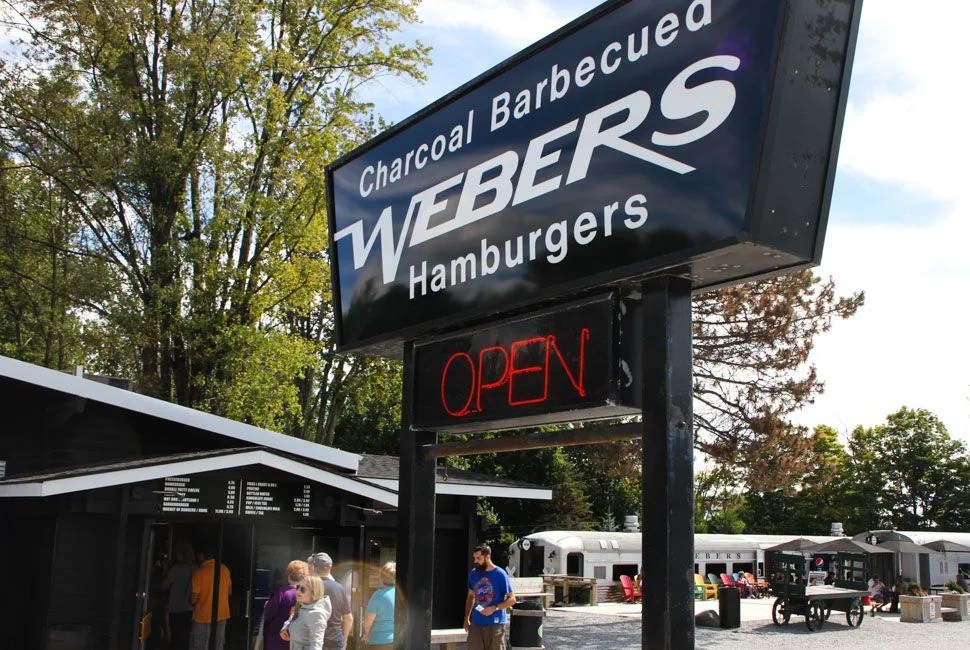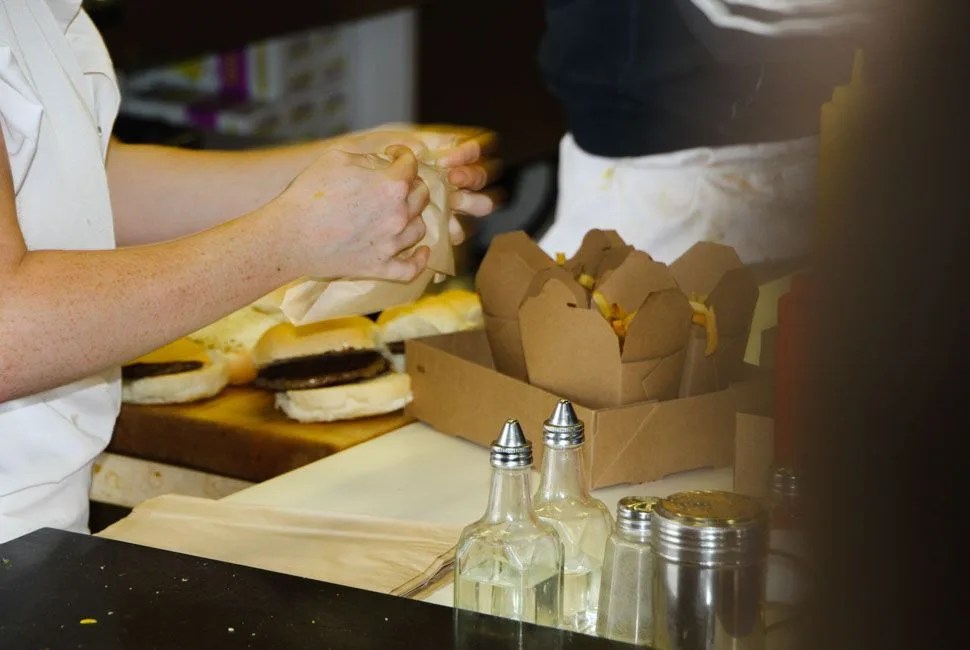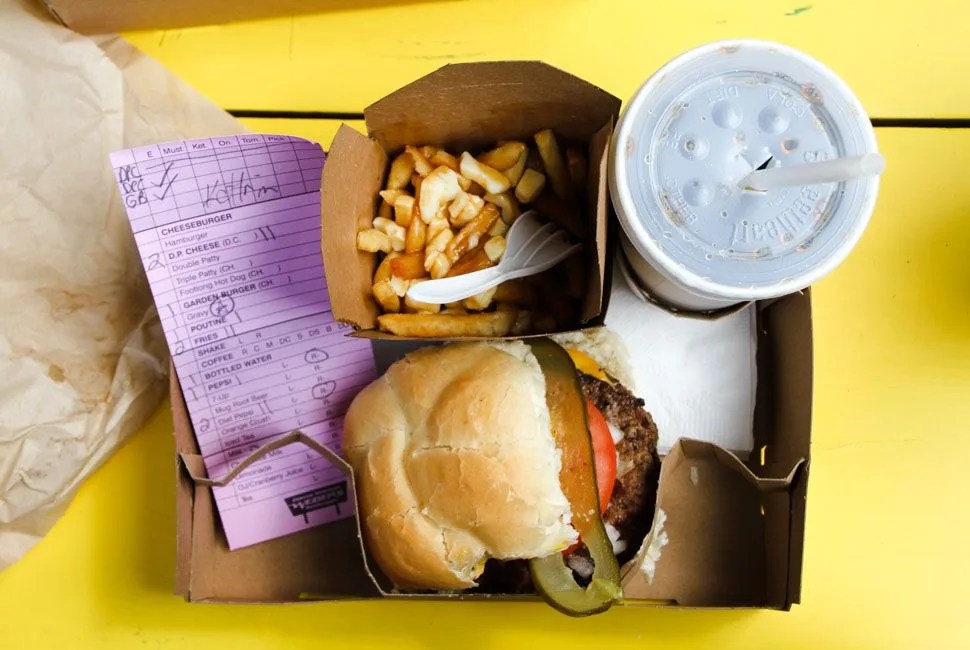5 photos
“Come on! Don’t sell me short. I don’t want a wave. I want the horn!”
Mike McParland, the “Key Man” at Webers Hamburgers, stands on a footbridge high above commuters and big-rig truckers as they make their way north on Highway 11, trying to get the latter to lay on their horns.
“Maybe they don’t want to startle the other cars, eh?”
McParland, now 67, has been working at Webers since he was 16. He embodies Webers, where high schoolers cut their teeth on their first jobs (including each of his five children) singing along to pop and classics while scooping fries and filling drinks. Aside from the burger stand and parking lot, most of Webers is a manicured lawn covered with around 60 park benches. This is because Webers is less a roadside hamburger stand, and more a welcome respite from travel. A place to park your car, park the kids and stretch your legs, open to travelers since 1963.
And the stand has been a huge success. While Webers shutters its doors during the winter, Chris McGlochlin estimates that about 300,000 visitors tramp over their grass in the summer season, eating burgers, hot dogs, poutine (fries topped with cheese curds, gravy and a sprinkle of mild heart palpitations) and ice cream. A staggering number, but it makes sense when you consider the location: For Torontonians heading north to vacation in Muskoka, or Muskokans heading south to visit Niagara Falls, Webers is a perfect stop to bisect the trip; when they open their doors at 9:30 AM, the line is typically 15 deep with travelers who got an early start.
The stand became such a popular rest stop destination that the government had to intervene. Southbound drivers were parking along the highway and running across on foot, dodging traffic, sometimes with babies in tow. Safety concerns lead to the construction of a median, and, when that failed, a fence atop the median. Finally in 1981, after people were caught literally slipping under the fence for a burger, Webers bought the footbridge on which McParland stands, from CN, in order to safely connect their “b-side” parking lot with the roadside stand. It remains the only privately owned footbridge across a public road in the entire province.
The importance of Webers as a destination isn’t a mystery to McGlochlin. “One of the things a lot of people will say: ‘The burgers aren’t even that good’”, he says as he walks into the train car, where the patties are made by hand each morning. “And you know what, maybe they aren’t compared to a place you’ve been before. But it’s not just about our burgers. It’s about experience; a place where you can get out and walk your dog, stretch your legs and use washrooms that are clean. It’s not just about the burgers.”





